Between the Land and Sea: Protecting our Wetlands
Our wetlands offer many benefits. They provide habitat for juvenile fish and migratory birds, nesting areas for turtles, and help filter sediments and nutrients from water flowing to the Great Barrier Reef. They also form the boundary between two different ecosystems, dry and wet, which means they have a unique role in nutrient exchange and water supply to the surrounding lands.
In the following stories, our partners share how they are restoring and protecting these unique ecosystems from invasive weeds, feral animals, and human impacts such as litter and intensive land use.
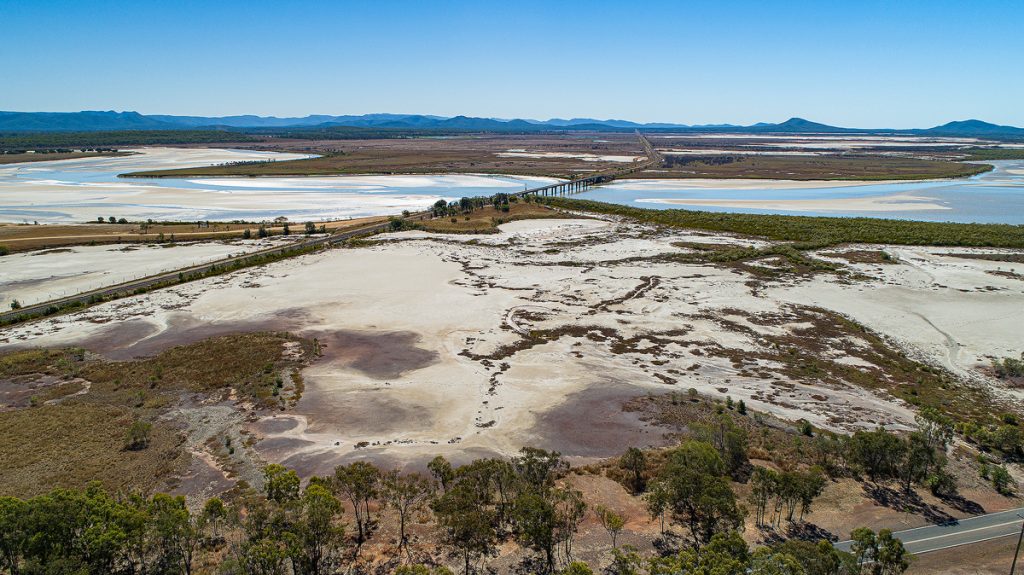
Two of our partners, Isaac Regional Council and Conservation Volunteers Australia, are teaming up to protect the Isaac region’s premier wetland, which boasts more than 250 bird species.
The St Lawrence Wetlands has been selected as one of 10 sites to benefit from the Revive our Wetlands project due to its significance to migratory shore birds and location in the Great Barrier Reef catchment.
In collaboration with the Koinjmal People of Koinmerburra Country, the project will deliver community-led and on-the-ground actions to benefit the health and profile of this internationally significant ecosystem.
Isaac Regional Council Mayor Anne Baker said the 594.9 square kilometre wetland area is a significant environmental and social pillar in the Isaac region.
“We already know that more than 50 per cent of Australian wetlands have been lost and it’s up to each and every one of us to help protect our prized St Lawrence wetlands,” Mayor Baker said.
The project is looking for volunteers to help support wetland conservation activities such as weed management and mapping activities on prickly acacia and giant rat’s tail, mapping and camera traps for feral pig and deer activity, marine debris collection, flora and bird surveys, and vegetation planting around campgrounds and wetland public view platforms.
To get involved and help protect the St Lawrence Wetlands, contact Conservation Volunteers Australia Project Officer, Leah Scoble on 0436 335 037 or email lscoble@cva.org.au.
The Revive our Wetlands initiative is a $3.45 million project funded by Chevron Australia to support the conservation of ten wetlands across Australia over a three-year period.
Introduced to Australia in the early 1900s, water hyacinth has become a major pest in creeks, rivers and dams. It chokes wetlands and waterways, killing native wildlife and interfering with recreational activities like boating, swimming and fishing.
In Sandringham Wetland, south of Mackay, Reef Catchments is trialling ways to not only control this invasive species, but also improve soil conditions in the bordering agricultural land.
Senior Project Officer Carlos Bueno said that they used a long reach excavator to physically remove the weeds as an alternative to herbicides, then the hyacinth was placed over a nearby fallow cane field as mulch.
“By using the aquatic weeds as mulch we hope to improve the soil condition, and it will be interesting to see if the landholder notices any differences for the required nutrient inputs and consequently improved productivity and profitability for the next cane crop,” Mr Bueno said.
“Since the water hyacinth seed bank can be viable for up to 25 years, there will have to be some investigation into biocontrol releases to deal with the infestation long term, but for now this is a great result for both the wetland and the farm.”

The trial was undertaken as part of larger works at the Sandringham Wetland Complex to protect and restore the wetland while assisting landholders to manage and improve grazing practices.
Funded by the Australian Government’s Reef Trust, the project has so far assisted local landholders to install over 6.5 kilometres of new wildlife friendly fencing, and 11 additional off-stream watering troughs to manage stock access in sensitive ecological areas.
Catchment Solutions has been working to improve wetland habitat on Marklands Station, a cattle property south of Mackay, for more than eight years.
Bund walls were built across the wetland in the 1950s and later expanded in the 1970s, separating the marine waters from the freshwater and creating a ponded pasture for the farm.
Although ponded pastures provide valuable water sources during dry periods, they can also disrupt fish movement and hinder the ecological function of the existing wetland.

Fisheries Ecologist Matt Moore explains how Catchment Solutions rehabilitated the wetland to aid fish migration and restore the natural ecosystem.
“Fish like tarpon, giant herring, and the iconic barramundi all rely on connectivity between salt and freshwater to complete their breeding and life cycles,” Mr Moore said.
“In some cases, ponded pastures can be highly productive fisheries. They provide key nursery habitats because it’s a relatively safe environment where they can grow without being eaten by the myriad of predators waiting for them in the estuary.
“However, in this case, the ponded pasture was too shallow, particularly in the dry season and fish that moved into the ponded pasture were at risk. Bund walls and other causeways within the property were also too high for the juvenile fish to swim over so they couldn’t migrate back to the estuarine waters.
“Over the years we worked to create deeper refuge pools, installed cattle exclusion fencing and off-stream watering points to prevent streambank erosion, plus we built rock ramps and cone fishways to help the fish migrate through.”
The extensive rehabilitation project is achieving great results with 87 juvenile freshwater barramundi recorded in 2021 sampling. One of these juvenile fish almost doubled in size when it was later re-caught in 2022, about 22 kilometres north at Sarina.
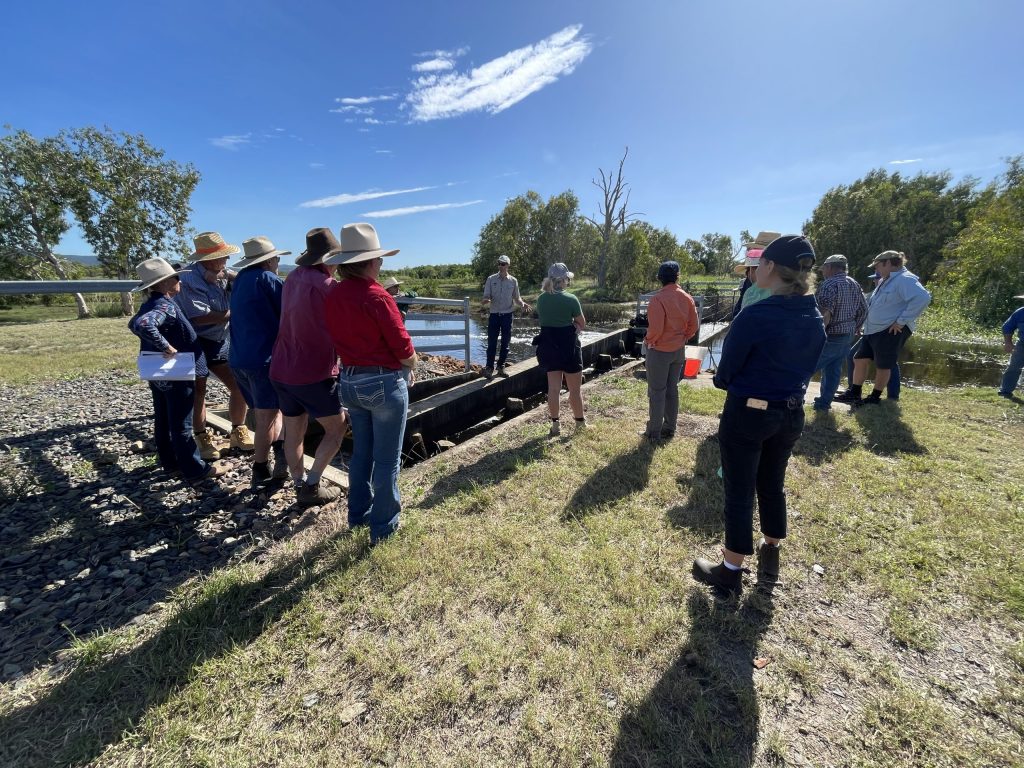
Catchment Solutions delivered the works over the years with support from Reef Catchments, and funding from the Australian Government’s National Landcare Program, and the Queensland Government’s Natural Resources Investment Program.
In June 2022, Reef Catchments completed a four-year project to improve the condition of nationally significant wetlands and freshwater streams in the Gregory River and Rocky Dam Creek sub-catchments.
The $1.78 million project funded by the Queensland Government’s Natural Resources Investment Program involved extensive works to improve fish passage, restore native vegetation and reduce the flow of sediment into the region’s waterways.

Reef Catchments CEO Katrina Dent said working closely with landholders and delivery partners was the key to project success.
“This project involved a lot of collaboration with different groups, including fellow Healthy Rivers to Reef partners Catchment Solutions, Sarina Catchment Landcare Management Association, and both the Mackay and Whitsunday regional councils, all working together to improve these two wetlands.
“The breadth of work that has been undertaken over the last four years is truly incredible. It’s estimated that collectively these works have improved fish passage along 300 kilometres of our water network and reduced the amount of sediment flowing into our waterways by over 2,500 tonnes per year.”
“It’s a great achievement, and we are very proud to have led the project. It shows that these areas can be rehabilitated, even after quite significant modifications to the landscape.”
PROJECT OUTCOMES
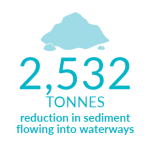
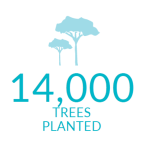

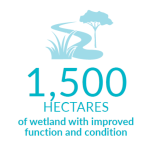

NQ Dry Tropics’ From The Land To The Sea project is partnering with a range of industry, government, and community groups to mitigate threats to coastal ecosystems.
An environmental study identified the Caley Valley Wetlands, located near Abbot Point in the Don catchment, as a high-priority site due to the high number of ecosystem services it provides. Subsequent assessments determined rubber vine and feral pigs to be the most prevalent threats to the wetlands.
With the backing of joint landowners North Queensland Bulk Ports and the Office of the Coordinator General, the project team engaged Juru Enterprises Limited (JEL) to undertake weed control across 80 hectares of coastal bushland.
The project area, which includes endangered beach scrub, sensitive riparian zones, and important cultural sites, is unsuitable for heavy machinery, so the JEL staff used manual control methods such as cut stump and basal bark spraying.
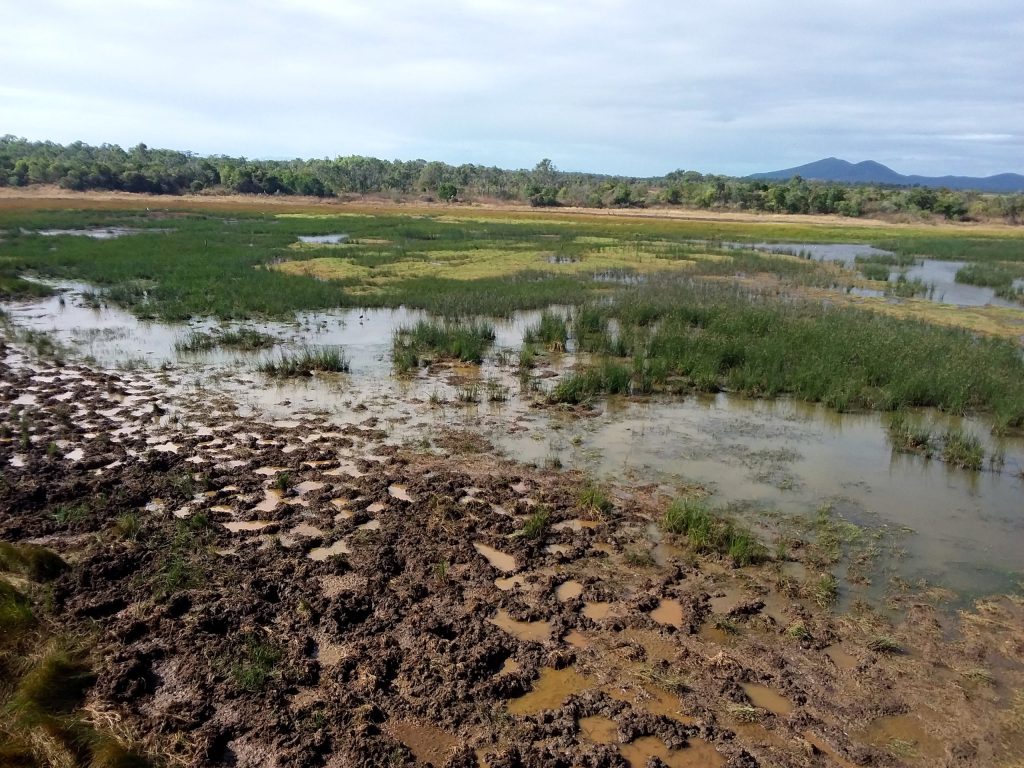
A three-day aerial shoot conducted last year removed 165 pigs from the wetlands. Encouragingly, the number of pigs present in the area appears to be decreasing, however, continued action will be required to ensure this trend continues.
Senior Biodiversity Project Officer Thijs Krugers said ongoing monitoring was critical to determining the success of the work at Caley Valley.
“Ecological surveys undertaken at regular intervals throughout the project will help us ascertain the health of the ecosystem,” Mr Krugers said.
Mr Krugers said he was confident the combination of strong partnerships and evidence-based on-ground actions would make a major contribution towards restoring the health of the wetlands.

The From the Land to the Sea project is funded by the Australian Government.



